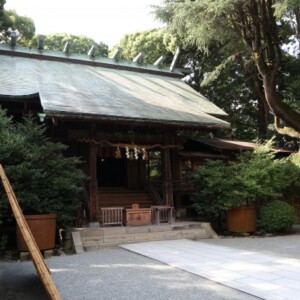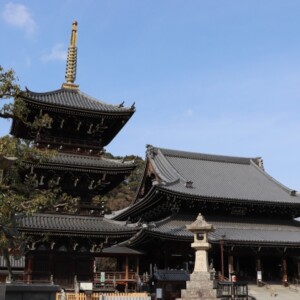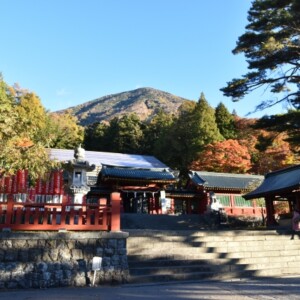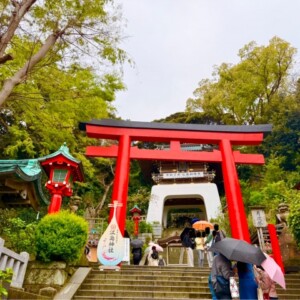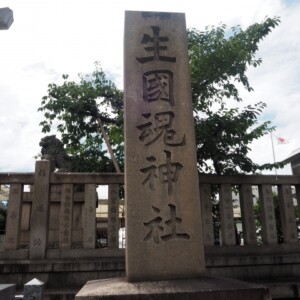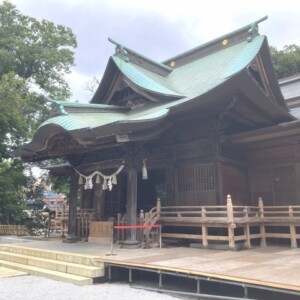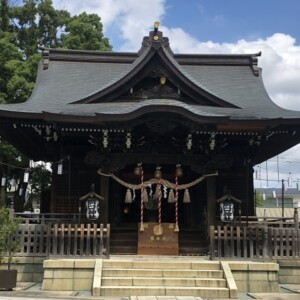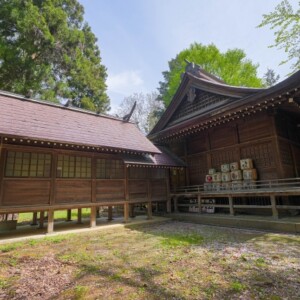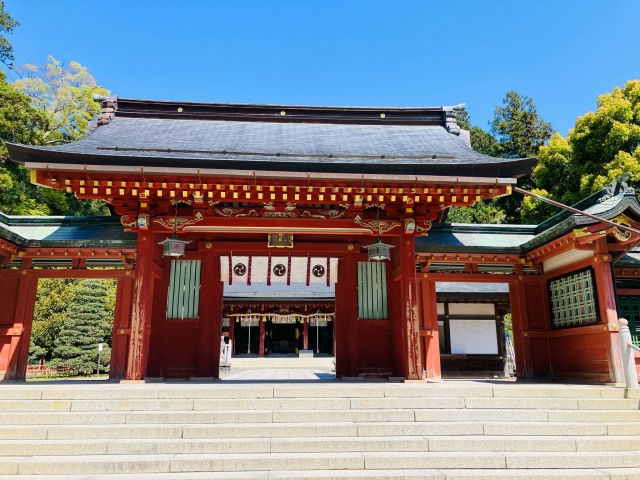
Shiobahiko Shrine and Shiogama Shrine|Complete guide to the history, highlights, and worship information of the Mutsu Province’s first shrine
Shiobahiko Shrine and Shiogama Shrine, located on Ichimori Mountain in Shiogama City, Miyagi Prefecture, are prestigious shrines with a history of more than 1,000 years as the first shrine of Mutsu Province. The shrine’s sacred area, with its group of shrine pavilions designated as a national important cultural property, the natural monumental Shiogama cherry blossoms, and the magnificent view of Matsushima Bay, continues to attract many worshippers.
Outline and basic information about Shihahiko Shrine and Shiogama Shrine
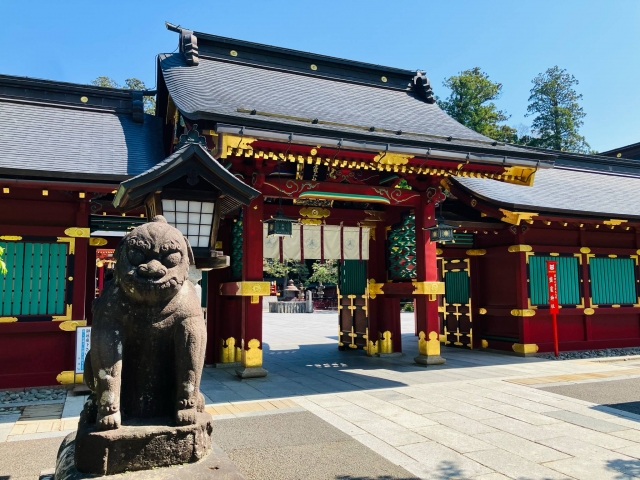
Shiobahiko Shrine and Shiogama Shrine are located in Shiogama City, Miyagi Prefecture, and two shrines, Shiobahiko Shrine and Shiogama Shrine, are located on the same grounds. Originally, only the Shiogama Shrine was located in this area, but during the Meiji era (1868-1912), the Shiobahiko Shrine was relocated to the shrine grounds, and today the two shrines are officially known as “Shiobahiko Shrine and Shiogama Shrine” and are a single entity.
Shiogama Shrine is the Mutsu Province’s first shrine, and Shiabiko-jinja Shrine is the Mutsu Province’s first shrine (Meishin-taisha). Both shrines were formerly classified as Chusha by the government and are now annexed shrines by the Jinja Honcho (Agency for Shinto Religion). The shrine grounds cover an area of approximately 30,000 square meters and are located on a hill overlooking Shiogama City and the islands of Matsushima Bay.
History and Origin
Shiogama Shrine is said to have its origins in the time when Takemikazuchi no Mikoto and Kyotsunushi no Mikoto led the two deities to the northeast and stayed in this area to teach the local people how to make salt. The date of the shrine’s founding is not clear, but it is believed to have been built before the Nara Period.
In the “Chikanshiki” of the Konin Shiki, which was compiled in 820, the shrine is described as having received 10,000 bundles of ritual fees from the state, which is said to be the first time the shrine was seen in authentic history. Since the Heian period (794-1185), the shrine has been specially revered by the Imperial Court and has played an important role as a deity for the protection of the Tohoku region.
On the other hand, Shiobahiko Shrine is a shiki-uchi-sha listed in the Engi-Shiki Shinmeicho (Book of Divine Names) from the Heian period (794-1185), and was relocated to its current location in 1874. The shrine was previously located on the banks of the Kappa River in Iwakiri Village, but was moved to the premises of Shiogama Shrine under the policy of the Meiji government.
During the Edo period (1603-1867), the shrine received the faith of successive lords of the Sendai domain, including Date Masamune, the first lord of the domain. A new shrine pavilion was completed by Masamune in 1607, and the shrine was rebuilt in 1663 during the reign of Tsunamura Date, the fourth lord. The present shrine pavilion was built by Tsunamura in 1695, and completed in 1704 by Yoshimura V, the fifth lord of the domain.
Deities and Benefits
Three deities are enshrined at Shiogama Shrine. Shiotsuchi no Ojinokami, the guardian god of the sea and the one who taught people how to make salt, is enshrined in a separate shrine. Takemikazuchi no kami and Futsunushi no kami, gods of war, are enshrined in the left and right shrines, respectively.
Shiodoro-no Kami is a mysterious deity, but is thought to be the deification of the sea and salt. Since he guided Emperor Jimmu and Yamayukihiko, he is also seen as having divine virtues for safe navigation and traffic safety, and is also a deity for safe childbirth. Takemikazuchi and Kyotsunushi, as gods of the Imperial Court sent to pacify the Tohoku region, are believed to be beneficial for the longevity of military fortune and national security.
Shiwahiko Shrine enshrines Shiwahiko no Kami, the god of agriculture, who is also the guardian deity of the Shiogama area. The shrine is worshipped as the god of agriculture, national land development, and industrial development, and is believed in by people who wish for the development and prosperity of the region.
Highlights and Features of Shiwahiko Shrine and Shiogama Shrine
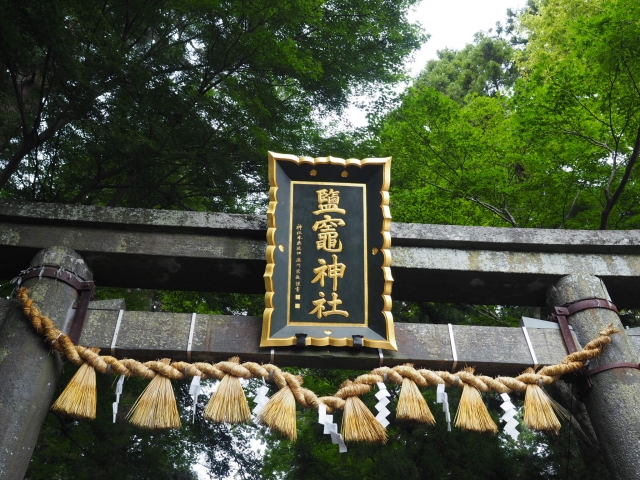
Shihabiko Shrine and Shiogama Shrine offer many attractions in the precincts of the shrine, where historical buildings and natural beauty are in harmony. From the shrine pavilions, designated as National Important Cultural Properties, to the seasonal flowers and the spectacular view of Matsushima Bay, there are many elements that attract visitors to the shrines.
Architectural and Structural Attractions
The main shrine, worship hall, and stone torii gate were designated as National Important Cultural Properties in 2012. 1704, the main shrine was built in the Nagare-zukuri architectural style, with an asymmetrical sloping roof that is longer on all sides than on the back.
The most distinctive feature of the shrine is its “three main halls and two worship halls,” a structure that is rare in Japan. The Shiogama Shrine has three main shrines (Betsumiya, Left Shrine, and Right Shrine), with two worship halls located in front of them. The main shrine is of the sangensha-ryu-zukuri style with a hiwadabuki cypress bark roof, while the worship hall is of the irimoya-zukuri style with a vermilion-lacquered copper shingle roof, creating a wonderful harmony between the different architectural styles.
The gorgeous main hall of the Shiwahiko Shrine, painted in black and vermilion, was rebuilt in 1938. In contrast to the traditional architecture of the Shiogama Shrine, the main hall is beautifully decorated with gorgeous ornaments.
Worshippers climb 202 stone steps, flanked by dense groves of cedar trees and stone lanterns, to reach the shrine pavilion. Passing through the massive Zuijimon Gate (built in the 1700s), which rises at the top of the steps, visitors arrive at the center of the shrine. This front approach to the shrine is also called “Otokozaka,” or “male hill,” and it is said that climbing the stone steps will bring power to the shrine.
Within the shrine grounds is the Bunji Shinto lantern, said to have been donated by Fujiwara no Tadahira in 1187, and Matsuo Basho, in his “Oku no Hosomichi” (The Narrow Road to the Deep North), wrote that he was impressed by its beauty. There are also expressive komainu (guardian dogs) placed throughout the shrine grounds, each with a different characteristic.
Beauty of Nature and Scenery
The Shiogama-zakura (Shiogama cherry tree), designated as a national natural monument, blooms in late April with soft, round, light pink flowers. The Shiogama-zakura is a rare and precious species that cannot be seen anywhere else, and many people visit the shrine every year to view the blossoms.
Dozens of varieties of cherry trees, including someiyoshino, are planted on the shrine grounds, making it a popular cherry blossom viewing spot in the spring. About 300 cherry trees of about 40 varieties are planted, and the entire shrine grounds turn light red in spring. In spring, the cherry blossoms are lit up after sunset, creating a fantastic nighttime cherry blossom viewing experience.
The precincts offer a spectacular view of Matsushima Bay, especially from in front of the Shihahiko Shrine. This bay has been called “Senga-no-ura” since ancient times, and was the setting for many waka poems in the Heian period (794-1185). On a clear day, you can see as far as Matsushima and Mt.
A Japanese garden is also maintained within the precincts of the temple, showing the beauty of each of the four seasons. In the fall, a large-scale chrysanthemum exhibition is held, and the precincts are decorated with chrysanthemums grown with great care.
Cultural Properties and Important Collections
The Shiogama Shrine Museum, located on the shrine grounds, houses approximately 5,000 valuable cultural properties. The most representative of these are the nationally designated Important Cultural Property “Tachi: Mein Rikunimitsu” and “Tachi: Mein Unsei”. In addition to these two swords, the museum also houses 35 swords dedicated to the Date clan during the Edo period (both designated Important Cultural Properties by Miyagi Prefecture).
It was customary for clan lords to dedicate swords to the Shiogama Shrine, and this was done at milestones in their reign. Each of the swords was made by the domain’s swordsmiths, and each was a gorgeous itomaki tachi. There are 39 records of tachi sword offerings, 35 of which are still in existence and are designated as tangible cultural properties of Miyagi Prefecture.
On the second floor of the museum, materials related to the salt manufacturing industry and fishing industry are on display, and visitors can learn about the history of salt in connection with the main deity, Shiodo Ro-ojin. The museum also has a large collection of books and prints from the Edo and Meiji periods, some of which depict portable shrine processions and festivals of the time.
In the precincts of the shrine, visitors can also see rare plants such as a sundial (replica) invented by Zihei Hayashi, wax plum trees brought back from Nagasaki, and taraha, an old and valuable tree in the northern limit of the area. If you are lucky, you may see whole tuna or other fish dedicated on the fish offering stand.
Guide to Worship and Visiting the Shrine
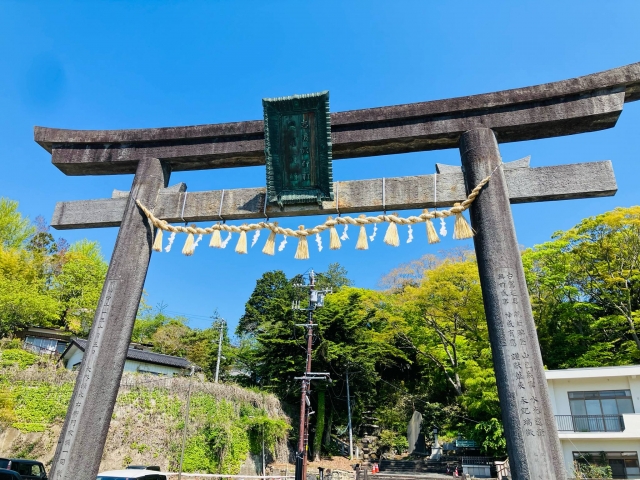
Because of the special configuration of the Shihahiko Shrine and the Shiogama Shrine, which are both located on the same grounds, it is important to understand how to visit each shrine. A variety of festivals are held throughout the year, and visitors can enjoy different attractions each season.
Worship Etiquette and Manners
In accordance with general shrine etiquette, bow as you pass through the torii gate and avoid the center of the approach to the shrine. After purifying the body and mind at the water closet, worship in front of the hall of worship in the manner of “ni-worship, ni-applause, ni-tei-worship”.
It is especially important to note that the main deity of the Shiogama Shrine, Shiodoro-ojin, is enshrined in a separate shrine. The front shrine is divided into the left (Takemikazuchi) and right (Kyotsunushi) shrines, and worship of the main deity is conducted at the separate shrine on the right side after passing through the Karamon gate. Since “Bekumiya” means “special,” it is recommended to visit the main shrine from the Bekumiya.
Shihahiko Shrine is located on the east side of the Shiogama Shrine grounds, and it is believed that visiting this shrine as well will provide enhanced benefits. Photography is allowed at both shrines, but please be mindful of the sacred nature of the site and be considerate of other visitors.
Annual and Seasonal Events
Several festivals are held throughout the year at Shiogama Shrine and Shiobahiko Shrine. In spring, the cherry blossoms are lit up after sunset, and at the Hote Matsuri, 16 men carry a one-ton portable shrine down 202 stone steps. During the summer’s “Minato Matsuri,” the portable shrines of both shrines are carried on a boat in the shape of a dragon or phoenix, and cruise around Matsushima Bay.
The main spring events are the Hote Matsuri in March and the Hana Matsuri in April. In the Hote Matsuri, 16 young men carry a portable shrine weighing 250 kan (about 1 ton) down Omotezaka, the approach to the Shiogama Shrine, and then proceed to the city in a spirited and heroic procession. This festival started about 300 years ago as a fire festival to pray for prosperity and to ward off evil spirits in the town. The Hana Matsuri is held when the cherry blossoms on the shrine grounds are in full bloom, and celebrates the coming of spring with a gorgeous procession of portable shrines.
The largest summer event is the Shiogama Minato Matsuri in July, one of the three largest boat festivals in Japan. During the Shiogama Minato Matsuri, the Shiogama Shrine serves as the starting point for the festival, and the portable shrines of Shiobahiko Shrine and Shiogama Shrine parade through Shiogama City, accompanied by about 100 boats, including the Oza-bune, which cruise around Matsushima Bay. A fireworks display is held on the eve of the festival, attracting many tourists.
On July 4-6, the ancient ritual of salt making will be held at the Mikama Shrine, a shrine of the Shiogama Shrine, which enshrines the deity Yondoro-ojin, who is said to have introduced the method of salt making to Japan. On the 6th, the Moshio-yaki ritual and the Mikama Shrine ritual are held in accordance with the old ceremony. This ritual is designated as a Miyagi Prefecture Intangible Folk Cultural Asset, and is the only one of its kind still practiced in Japan.
In autumn, the Hatsuhohiki is held on November 23, and the plaza in front of the main shrine is filled with rice bales, huge fish, and vegetables offered in gratitude for a bountiful harvest and a great catch. Also in autumn, a large-scale chrysanthemum exhibition is held and the grounds of the shrine are decorated with beautiful chrysanthemums.
In winter, the Setsubun Festival is held in early February, and bean-throwing ceremonies are held, which are believed to drive away evil spirits. The Obonakiage ritual is also held, in which the previous deities, kadomatsu, and New Year’s decorations that were enshrined at home are burned, and the gods ascend to the land of the gods with a vigorously burning fire. It is said that if a person is exposed to the fire, he or she will be in good health and the family business will prosper for a whole year.
Red Seal and Good Luck Charm Information
At both Shihahiko Shrine and Shiogama Shrine, red seals are available for both shrines. The red seal office is located in the awarding office on the shrine grounds and is open during regular visiting hours. The initial fee is about 300 yen each.
As for good luck charms, those for safe delivery, safe navigation, and traffic safety associated with the main deity, Shiodo Ro-ojin, are particularly popular. In addition, amulets for agricultural protection and national land development are also awarded at the Shiwahiko Shrine. Amulets featuring the Shiogama cherry tree and purifying salt associated with salt are also available.
Hato-mame (pigeon beans) are also sold in the precincts of the shrine, and visitors can enjoy the experience of feeding pigeons in the precincts where many pigeons live. For details about the amulets and red seals, please contact the shrine in advance or check the official website.
Access/Use Information
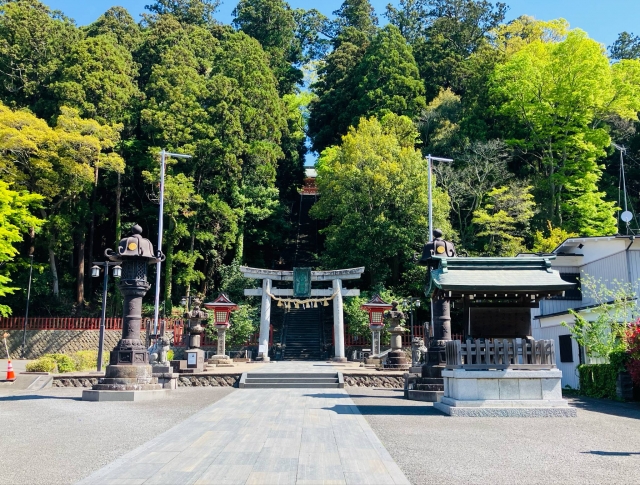
Shiobahiko Shrine and Shiogama Shrine are located in the center of Shiogama City, Miyagi Prefecture, and are relatively easy to access from Sendai City. Both public transportation and private cars are available, allowing visitors to choose the mode of transportation that best suits their needs.
Transportation Access
To access the shrine by train, the nearest stations are “Hon Shiogama” or “Nishi-Shiogama” on the JR Senseki Line. It is about a 15-minute walk from Hon Shiogama Station, and about a 10-minute walk from Nishi-Shiogama Station. From Sendai Station, it is an easy 25-minute ride on the Senseki Line. During Hatsumode (New Year’s visit), special trains run from midnight to early morning on both the Senseki Line and Tohoku Line.
It is also accessible from Shiogama Station on the JR Tohoku Main Line in about 20 minutes on foot. This is convenient for access from the Tohoku Main Line.
Access by private car is about 10 minutes from the “Tofunaka IC” of the Sanriku Expressway or about 15 minutes from the “Sendai Kohoku IC” of the Sendai-Tobu Road. From Tohoku Expressway, it takes about 30 minutes via “Yamato IC”.
The Shiogama Center is also accessible by bus, with Miyagi Kotsu buses running from various locations in Shiogama City. It is convenient to take the bus to the Ichimoriyama bus stop.
Hours of Admission, Fees, and Parking
The temple is open 24 hours a day, 7 days a week. However, since lighting is limited during the night, daytime visitation is recommended.
Admission to the shrine is free. However, admission to the Shiogama Shrine Museum is charged. Museum admission is 200 yen for adults, 150 yen for junior and senior high school students, and 80 yen for elementary school students. Museum hours vary depending on the season: 8:30-17:00 from April to September; 8:30-16:30 in February, March, October, and November; and 8:30-16:00 in January and December. In principle, the museum is open all year round, but may be closed temporarily for exhibition changes.
There are four free parking lots (1st, 2nd, 3rd, and bus) for worshippers on the east and north sides of the temple grounds, with a total capacity of 300 vehicles. The parking lots can accommodate large buses, and groups can also visit the temple. However, public transportation is recommended since the parking lots are crowded on the three days of the New Year, during the cherry blossom season, and during festivals.
The temple grounds are also accessible to wheelchair users through a barrier-free route. However, the 202 stone steps of the main approach to the shrine are not wheelchair accessible, so please use the detour route from the parking lot on the east side to enter the shrine grounds.
The shrine also accepts weddings and various types of prayers, and advance inquiries are required for details. We also recommend that you contact us in advance if you wish to visit the shrine in a group or participate in special events.
<Address> 1-1 Ichimoriyama, Shiogama, Miyagi 985-8510
Reference site
Shiobahiko Shrine and Shiogama Shrine official website: http://www.shiogamajinja.jp/



